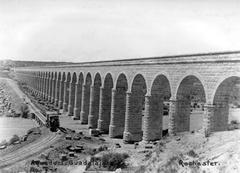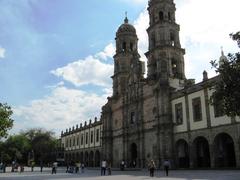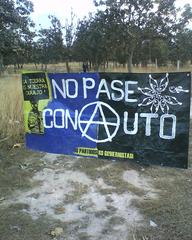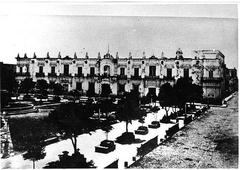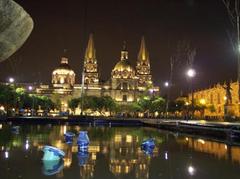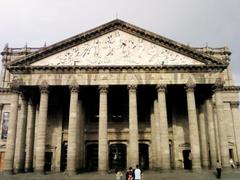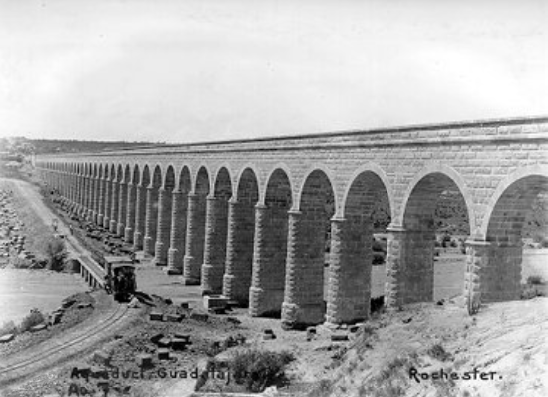
Visiting Hours, Tickets, and Tips for Renta de Caballos in Guadalajara
Date: 17/07/2024
Introduction
Guadalajara, Mexico, offers a unique blend of rich history, vibrant culture, and breathtaking natural beauty. One of the most captivating ways to experience this city is through horseback riding, known locally as renta de caballos. This activity not only allows visitors to explore the scenic landscapes surrounding Guadalajara but also provides an immersive experience into local traditions and history, deeply rooted in Mexican culture. Horseback riding in Guadalajara can be traced back to the colonial era when the Spanish introduced horses to Mexico in the 16th century (UNESCO). Over time, horses became integral to transportation, agriculture, and eventually, recreational activities, symbolizing status and prestige. Today, renta de caballos remains a popular activity, reflecting the city’s ongoing commitment to preserving its cultural heritage. In this comprehensive guide, we will delve into the historical and cultural significance of horseback riding in Guadalajara, explore modern-day practices, and provide essential tips for visitors looking to embark on this unforgettable adventure.
Table of Contents
- Introduction
- History and Significance of Renta de Caballos in Guadalajara
- Modern-Day Renta de Caballos
- Visitor Tips
- FAQ
- Conclusion
History and Significance of Renta de Caballos in Guadalajara
Historical Background
The tradition of horseback riding in Guadalajara has deep roots that trace back to the colonial era. The Spanish introduced horses to Mexico in the 16th century, and they quickly became an integral part of the local culture and economy. Guadalajara, being one of the major cities in Mexico, embraced this tradition wholeheartedly. The city’s landscape, with its vast open spaces and scenic trails, provided an ideal setting for horseback riding.
During the colonial period, horses were primarily used for transportation and agricultural work. However, over time, horseback riding evolved into a recreational activity and a symbol of status and prestige. The haciendas (large estates) around Guadalajara often had their own stables and riding trails, making horseback riding a popular pastime among the elite.
Cultural Significance
Horseback riding, or “equitación” in Spanish, holds a special place in Mexican culture, particularly in Guadalajara. It is closely associated with the charro tradition, a significant aspect of Mexican identity. Charros are skilled horsemen and women who participate in charrería, a competitive event similar to rodeo that includes various equestrian skills and traditional Mexican attire. The charro culture is so vital that it was inscribed on the UNESCO Intangible Cultural Heritage list in 2016.
In Guadalajara, the charro tradition is celebrated with great enthusiasm. The city hosts numerous charrería events throughout the year, attracting participants and spectators from all over the country. These events not only showcase the equestrian skills of the charros but also highlight the rich cultural heritage of the region.
Modern-Day Renta de Caballos
Economic Impact
The renta de caballos industry in Guadalajara contributes significantly to the local economy. It supports various businesses, including ranches, equestrian centers, and tour operators. Additionally, it creates employment opportunities for local residents, from horse trainers and guides to stable hands and maintenance workers.
The industry also attracts tourists, both domestic and international, who are eager to experience horseback riding in a culturally rich and picturesque setting. This influx of tourists boosts the hospitality sector, including hotels, restaurants, and other tourism-related businesses.
Preservation of Tradition
The renta de caballos industry plays a crucial role in preserving the equestrian traditions of Guadalajara. Many equestrian centers and ranches offer training programs and workshops that teach traditional riding techniques and charro skills. These programs help keep the charro culture alive and ensure that future generations continue to appreciate and practice these time-honored traditions.
Moreover, the industry promotes the conservation of horse breeds integral to the charro tradition, such as the Azteca horse, a breed developed in Mexico that combines the qualities of the Andalusian, Quarter Horse, and Criollo breeds. The preservation of these breeds is essential for maintaining the authenticity and heritage of Mexican equestrian culture (Azteca Horse Association).
Visitor Tips
Best Time to Visit
The ideal time to visit for horseback riding in Guadalajara is during the dry season, which spans from November to April. During these months, the weather is more predictable, with less rainfall and more sunny days, making it perfect for outdoor activities like horseback riding. The average temperature ranges from 20°C to 30°C (68°F to 86°F), providing a comfortable climate for tourists.
Booking and Reservations
It is highly recommended to book your horseback riding experience in advance, especially during peak tourist seasons and weekends. Many operators offer online booking options, which can be more convenient and sometimes cheaper. Websites like Viator and TripAdvisor provide reviews and booking services for various horseback riding tours in Guadalajara.
What to Wear
Comfortable clothing is essential for a pleasant horseback riding experience. Here are some recommendations:
- Footwear: Closed-toe shoes or boots with a small heel are ideal for riding. Avoid sandals or flip-flops.
- Clothing: Long pants are recommended to protect your legs from chafing and potential scratches from vegetation.
- Headgear: While some operators provide helmets, it is advisable to bring your own for hygiene and safety reasons.
- Sun Protection: A wide-brimmed hat, sunglasses, and sunscreen are crucial to protect against the strong Mexican sun.
Safety Tips
Safety should be a top priority when engaging in horseback riding. Here are some essential safety tips:
- Listen to Your Guide: Always follow the instructions given by your guide. They are experienced and know the terrain and the horses well.
- Check Equipment: Ensure that all riding equipment, such as saddles and stirrups, are properly secured and in good condition.
- Stay Calm: Horses can sense fear and anxiety. Try to remain calm and composed to avoid startling the animal.
- Know Your Limits: If you are a beginner, inform your guide so they can match you with a suitable horse and provide additional assistance.
Health Considerations
Before embarking on a horseback riding adventure, consider the following health tips:
- Hydration: Carry a water bottle to stay hydrated, especially during hot weather.
- Medical Conditions: If you have any medical conditions that might affect your ability to ride, consult with your doctor beforehand.
- Insect Repellent: Apply insect repellent to protect against mosquitoes and other insects, particularly if you are riding through wooded areas.
Language and Communication
While many tour operators in Guadalajara speak English, it is beneficial to know some basic Spanish phrases to enhance your experience. Here are a few useful phrases:
- Hola (Hello)
- Gracias (Thank you)
- ¿Cuánto cuesta? (How much does it cost?)
- ¿Dónde está el baño? (Where is the bathroom?)
Local Etiquette
Understanding and respecting local customs can enrich your visit:
- Tipping: It is customary to tip your guide if you are satisfied with the service. A tip of 10-15% of the tour cost is generally appreciated.
- Respect for Animals: Treat the horses with respect and kindness. Avoid making loud noises or sudden movements that could startle them.
- Environmental Responsibility: Dispose of any trash properly and respect the natural environment.
Accessibility
While horseback riding may not be suitable for everyone, some operators offer adapted services for individuals with disabilities. It is advisable to contact the tour operator in advance to discuss any specific needs or accommodations.
Nearby Attractions
Combining your horseback riding experience with visits to nearby attractions can make your trip even more memorable. Some notable places to explore include:
- Tequila Town: Located about 60 km from Guadalajara, this town is famous for its tequila distilleries and agave fields. (Tequila Town)
- Guachimontones: An archaeological site featuring circular stepped pyramids, located about 40 km from Guadalajara. (Guachimontones)
- Lake Chapala: The largest freshwater lake in Mexico, offering beautiful scenery and various water activities. (Lake Chapala)
Photography Tips
Capturing the beauty of your horseback riding adventure can be a rewarding experience. Here are some tips for taking great photos:
- Golden Hour: The best time for photography is during the golden hour, shortly after sunrise or before sunset, when the light is soft and warm.
- Action Shots: Use a fast shutter speed to capture the movement of the horses.
- Scenic Views: Take advantage of the natural landscapes and include them in your shots for a more dynamic composition.
- Safety First: Always prioritize safety over getting the perfect shot. Avoid taking photos while riding unless you are confident in your ability to do so safely.
Local Cuisine
After a day of horseback riding, indulging in local cuisine is a must. Guadalajara is known for its delicious food, and some dishes to try include:
- Birria: A traditional stew made with goat or beef, seasoned with a variety of spices.
- Tortas Ahogadas: Sandwiches filled with pork and drenched in a spicy tomato sauce.
- Tejuino: A refreshing drink made from fermented corn dough, often served with lime and salt.
Emergency Contacts
In case of emergencies, it is essential to have the following contact information readily available:
- Local Emergency Number: 911
- Tour Operator Contact: Ensure you have the contact details of your tour operator.
- Nearest Hospital: Familiarize yourself with the location of the nearest hospital or medical facility.
FAQ
Q: What are the best times to go horseback riding in Guadalajara? A: The best times are during the cooler months from November to February. Early mornings and late afternoons are ideal.
Q: Are there guided horseback riding tours available? A: Yes, many equestrian centers offer guided tours for different skill levels.
Q: What should I wear for horseback riding? A: Wear comfortable clothing, long pants, closed-toe shoes, and a hat. Helmets are usually provided by the equestrian centers.
Conclusion
Renta de caballos in Guadalajara is more than just a recreational activity; it is a gateway to understanding and experiencing the rich cultural tapestry and natural beauty of the region. From its historical roots in the colonial era to its modern-day significance, horseback riding offers a unique and enriching experience for both locals and tourists. The industry not only supports the local economy through tourism but also plays a crucial role in preserving traditional equestrian practices and breeds integral to Mexican heritage (Azteca Horse Association). By following best practices, such as booking tours in advance, dressing appropriately, and adhering to safety guidelines, visitors can ensure a safe and enjoyable experience. Additionally, exploring nearby attractions like Tequila Town, Guachimontones, and Lake Chapala can enhance the overall trip, providing a well-rounded understanding of the region’s cultural and natural offerings. Whether you’re a seasoned rider or a beginner, renta de caballos in Guadalajara promises a memorable adventure that celebrates the spirit of Mexican tradition and the beauty of its landscapes. For the latest updates and more travel tips, be sure to download the mobile app Audiala and follow us on social media.
References
- Exploring Guadalajara - A Guide to Renta de Caballos and Charro Traditions, 2024, Author (UNESCO)
- Discovering Renta de Caballos - Ultimate Guide to Tours, Tickets, and Historical Sites in Guadalajara, 2024, Author (TripAdvisor)
- Ultimate Guide to Visiting Renta de Caballos in Guadalajara - Hours, Tickets, and Tips, 2024, Author (Viator)
